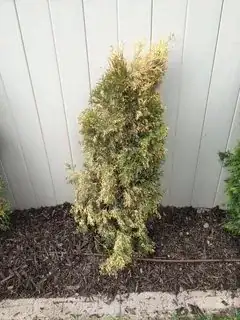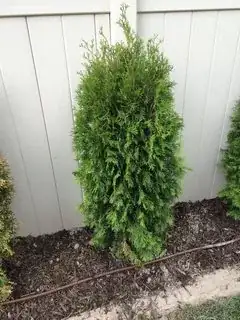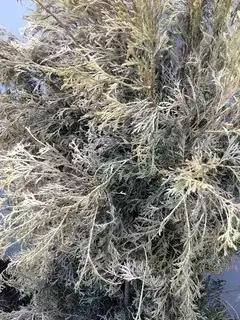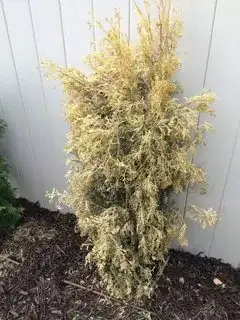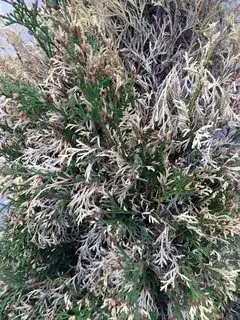Of the eight pictures only the third picture shows a cedar that will look good. The rest are either dead or so badly damaged it would take years before they looked good.
This kind of dieback is often seen when they are not adequately watered after planting or when stock is planted late in the fall and doesn't have a chance to root before winter.
Arborvitae or cedars prefer a soil rich in organic matter that is not dry. A thick mulch of two to four inches (up to eight cm) will make a huge difference in the success of the plants.
If you happened to have a downspout nearby you could divert the rain that would normally drain off to the street and water the cedars. By using a four inch drain pipe with sleeve in a trench next to the cedars you can water your cedars while sitting in your house.
